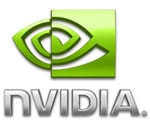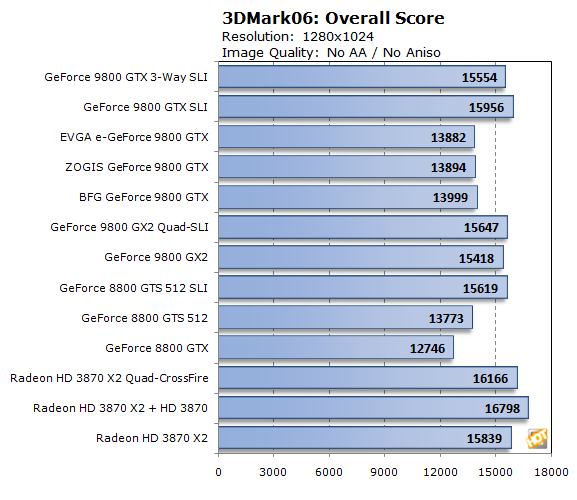NVIDIA GeForce 9800 GTX Round-Up: BFG, EVGA, Zogis
Our Test System and 3DMark06

HOW WE CONFIGURED THE TEST SYSTEMS: We tested all of the graphics cards used in this article on either an Asus nForce 790i SLI Ultra based Striker II Extreme motherboard (NVIDIA GPUs) or an X48 based Asus P5E3 Premium (ATI GPUs) powered by a Core 2 Extreme QX6850 quad-core processor and 2GB of low-latency Corsair RAM. The first thing we did when configuring these test systems was enter their respective BIOSes and set all values to their "optimized" or "high performance" default settings. Then we manually configured the memory timings and disabled any integrated peripherals that wouldn't be put to use. The hard drive was then formatted, and Windows Vista Ultimate was installed. When the installation was complete we fully updated the OS, and installed the latest DX10 redist and various hotfixes, along with the necessary drivers and applications.
|
|
|
|
Asus Striker II Extreme Asus P5E3 Premium Radeon HD 3870 X2 (x2) 2048MB Corsair DDR3-1333 C7 Integrated Audio |
Relevant Software: Windows Vista Ultimate NVIDIA Forceware v174.53 |
|
|
|
|
|
3DMark06 is the most recent addition to the 3DMark franchise. This version differs from 3Dmark05 in a number of ways, and includes not only Shader Model 2.0 tests, but Shader Model 3.0 and HDR tests as well. Some of the assets from 3DMark05 have been re-used, but the scenes are now rendered with much more geometric detail and the shader complexity is vastly increased as well. Max shader length in 3DMark05 was 96 instructions, while 3DMark06 ups that number to 512. 3DMark06 also employs much more lighting and there is extensive use of soft shadows. With 3DMark06, Futuremark has also updated how the final score is tabulated. In this latest version of the benchmark, SM 2.0 and HDR / SM3.0 tests are weighted and the CPU score is factored into the final tally as well. |

We've got a lot of GeForce 9800 GTX related data available in this piece. We've tested the three GeForce 9800 GTX cards we received individually, in a 2-card SLI configuration, and in a 3-way SLI configuration. As you can see, the new 9800 GTX puts up the best 3DMark06 score of any single-GPU based graphics card. And in SLI-mode it outpaced all other NVIDIA-powered setups. Three way SLI resulted in some additional CPU overhead though, hence the somewhat lower score.


3DMark06's individual shader model tests show how the GeForce 9800 GTX's scores were achieved. The traditional 2-card SLI setup put up some strong numbers here, outperforming all other NVIDIA configurations.







